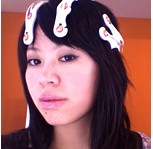Toys of the new generation will scan the brain
 Cubes and sandboxes are a thing of the past. The future generation of kids will mess around with gadgets that literally read their minds. Encephalographs (devices for the removal of EEF) now managed to reduce the cost and reduce so that they can be used in the entertainment industry.
Cubes and sandboxes are a thing of the past. The future generation of kids will mess around with gadgets that literally read their minds. Encephalographs (devices for the removal of EEF) now managed to reduce the cost and reduce so that they can be used in the entertainment industry.Several manufacturers have already created prototypes of toys with integrated brain scanners. For example, the NeuroSky Darth Vader lightsaber begins to glow if the child concentrates its attention on this (the Darth Vader mask is equipped with special sensors). Doctors are sure that this is a very useful thing for modern children with scattered attention.
The American company NeuroSky specializes in creating “neurogirls” of a new generation. Engineers of this company are trying to implement brain interfaces in everything. The sword and mask of Darth Vader is their notion. It is rather primitive, but it is quite capable of impressing an inexperienced audience at the first time after entering the market. This will happen during 2007.
More sensitive neural interfaces will be created in the future. Then the toys will become much more difficult. According to some experts, they can make a real revolution in the market. It is easy to imagine that the receiver of signals from the brain scanner can be built into all toys without exception. Of course, the child will have to constantly wear a special cap, but then all the toys will always know about his mood. They will turn on themselves when he is having fun, and turn themselves off when he wants to sleep. To control cars with the power of thought - any boy dreams about it.
')
In video games, support for brain feedback allows you to catch when the player is nervous and afraid. For example, in Counter Strike, your cursor will immediately begin to tremble and to lose sight. What can I say, the scope of the brain scanners in games is limited only by the imagination of developers.
The NeuroSky prototype scanner measures basic brain activity, including signals related to concentration, relaxation, and anxiety. The technology allows you to catch the gradation of the signal and distribute them on a scale from 1 to 100.
Brain sensors and processing of brain signals for a long time used in medicine and sports. For example, the co-founder of the company NeuroSky developed these interfaces for the South Korean Olympic archery team, namely, to improve the concentration and relaxation techniques of athletes.
A NeuroSky single-electrode household encephalograph does not require the use of a gel and can be embedded in any cap for as little as $ 20. In the very near future, a number of toys with such devices will appear on the market. The developers guarantee that the device will work with almost 100% of people, regardless of temperature and other environmental conditions.
In addition to the electro-nefalograph, NeuroSky engineers are trying to find use in toys for other devices, such as electromyograph (captures muscle contractions) and electrooculograph (captures the movements of the retina of the eye).
NeuroSky is not the only startup that is ready to release to the market gaming brain scanners. Emotiv Systems has developed a much more sophisticated device not with one, but with 18 sensors. He is also able to work without lubrication. The device picks up the basic waves, and also detects smiles, blinks, laughter, the emergence of conscious thoughts and unconscious emotions, and, of course, great for computer games (see demos).
Sales of gaming accessories based on Emotiv Systems technology will begin next year. Most likely, the brain scanners for the Nintendo Wii, Sony PlayStation 3 and Microsoft Xbox 360 will appear first.
“Brain joysticks” for PlayStation, PS2 and Xbox gaming consoles appeared on the market as early as 2005. True, they are still very expensive (about $ 600) and are intended for the treatment of patients with specific concentration problems, such as autism. The CyberLearning Technology SmartBrain system , for example, in the Gran Turismo racing simulator does not allow you to accelerate to maximum speed until the patient has maximally concentrated.
via Associated Press
Source: https://habr.com/ru/post/7806/
All Articles